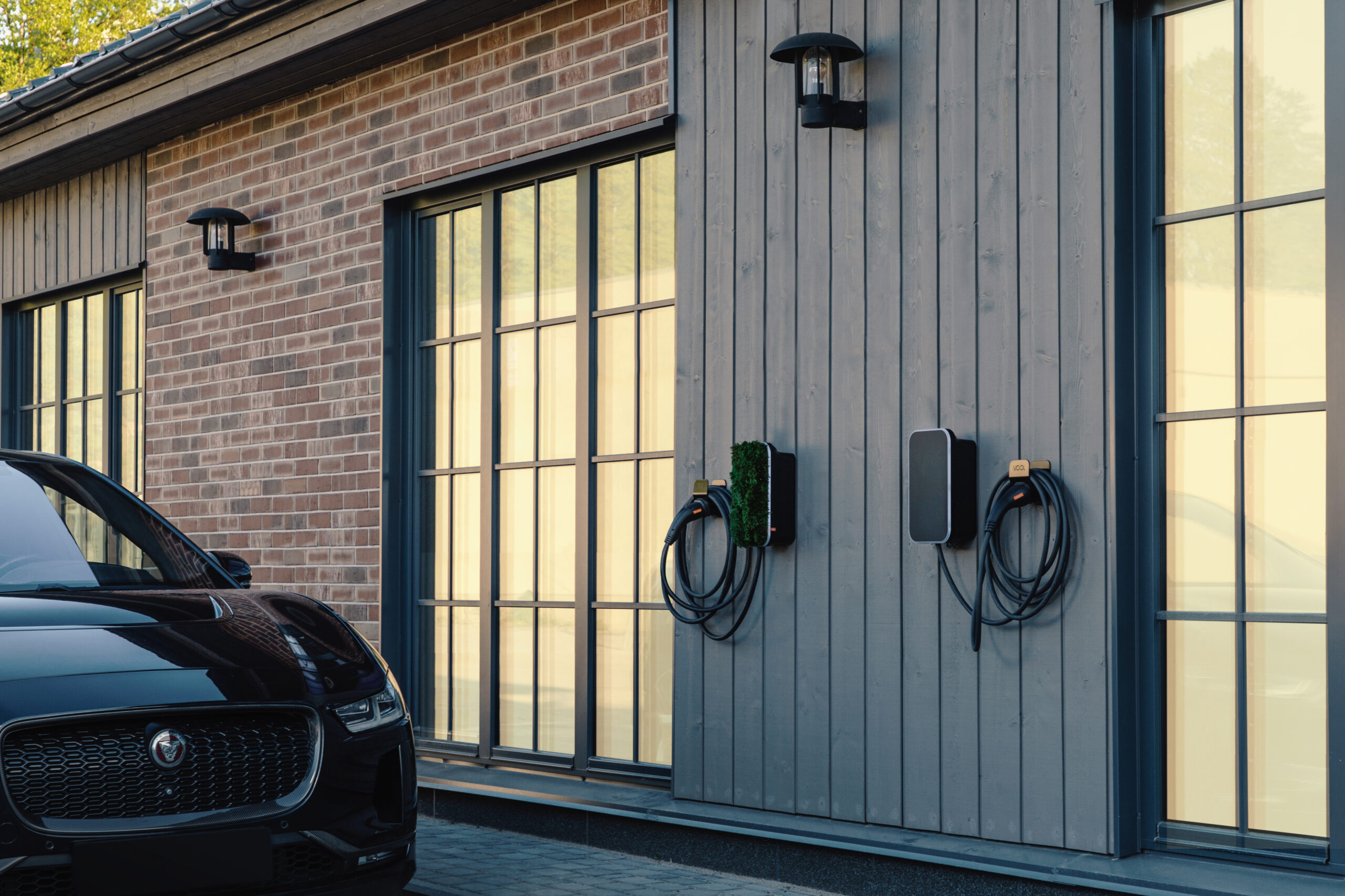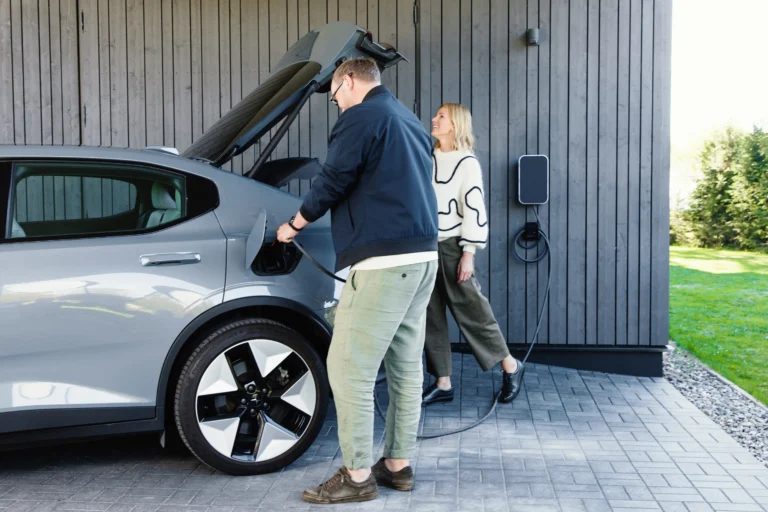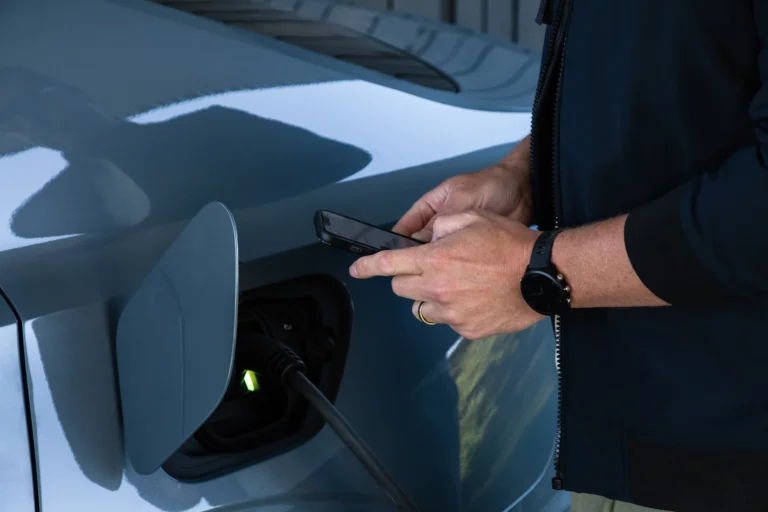Pagrindinis » News » 5 steps to choose a charging station for your own home and save money
Electric cars are becoming increasingly popular and more and more people are choosing this environmentally friendly means of transport. However, to get the most out of your electric car, you need to make sure you have the right charging station at home. In this article, we will discuss five key steps to help you choose the right charger for your home.

The first step is to understand the differences between DC and AC charging stations. DC (direct current) charging stations, also known as fast charging stations, transfer power directly to the battery of an electric car, bypassing the internal inverter. These stations often start at 50 kW and can reach 400 kW or more, and therefore require significant electrical power and support resources. Typically, these types of stations are used in commercial, public places where fast charging of the vehicle is needed, such as petrol stations, interstate parking lots, out-of-town cafés, and similar locations. Prices for fast charging stations start at around €20,000.
AC (alternating current) charging stations, on the other hand, are designed for home use or for places where at least a few hours are spent. They transmit power through the electric car’s internal inverter, which converts the alternating current into direct current suitable for the battery. This type of station is typically 3.6 – 22 kW power, are easy to install, do not require very high energy inputs and are significantly cheaper. The cost of AC stations ranges from €500 to €1500. If the unit comes with more features, such as Wi-Fi connectivity or smart control options, the price can go up to €2000 or more.
Every electric car has an internal inverter that converts the AC (alternating) current into the DC (direct) current needed by the battery. The power of this converter determines the speed at which the car can be recharged using the home station. For example, if your electric car’s inverter can accept 7.2 kW, choose a charging station that can deliver at least that much power. This will help to ensure optimum charging speed. Similarly, if your EV supports three-phase charging, it is recommended to choose a three-phase charging station as well, as three phases of electricity replenishes the car’s battery more quickly than one phase. Finally, make sure that the connector on the charging dock matches the charging socket on your car – most modern EVs use the Type 2 standard.

To set up a charging station at home, the first step is to find out how powerful a charger you need for your electric car. For example, for the Nissan Leaf, a 7.4 kW charging station is usually recommended, which allows the car to be fully charged in 7-8 hours. Meanwhile, Tesla Model 3 owners often recommend an 11 kW charging station for faster charging in 5-6 hours.
Knowing the power requirements of the electric vehicle and the charging station, assess the power capacity of your home’s electricity supply to determine how much power can be allocated to the charging station without overloading your home network. For example, if your home’s electricity supply is 11 kW and other electrical appliances use around 3 kW, the remaining 8 kW can be used for the charging station. If this is not enough power, there are several solutions: a power boost or a dynamic power controller. The latter is a device that automatically monitors the load on the home network and prioritises home appliances. When devices are switched off, for example at night, the free power is returned to the charging station and the car charges faster. This solution makes efficient use of existing energy resources and saves the cost of increasing power.
Before you buy a charging station, you should still consider the possibility of installing one at home. This includes planning the cabling route, selecting the location of the station, and possible field work if the station is to be installed away from the main electrical panel.
It’s also important to consider where and how you park your car most often, to help you determine the right place to stop and the length of charging cable you need. Some charging stations have built-in cables so you don’t have to plug it in every time and unplug it after a charging session. When charging the car several times a week, this becomes a convenient advantage. However, you can also choose a charging station with a charging socket and carry the cable separately in the boot. If you need to charge your vehicle at another location, you can use it.

Modern charging stations can have a variety of additional features that increase the ease of use. For example, some stations allow you to manage charging via a mobile app, charge during the cheapest electricity exchange hours (with Nord Pool integration), monitor charging progress and even set charging times when electricity is cheaper.
It is also worth paying attention to the station’s communication with the solar power plant if you have one at home. This can help maximise the use of the electricity produced and reduce your electricity bills. Finally, be sure to check the manufacturer’s warranty – a longer period often means greater reliability and safety.
By following these five steps, you will be able to choose the right charging station for your home, ensuring convenient and efficient charging of your electric car.
Good to know: residents who install a charging point at their home can now benefit from state support and can recover up to 40% of the installation costs. Find out how it works and what’s important to know on our support page.
We use cookies to ensure that our website runs smoothly and to provide you with the most relevant content. You can choose which cookies you accept.